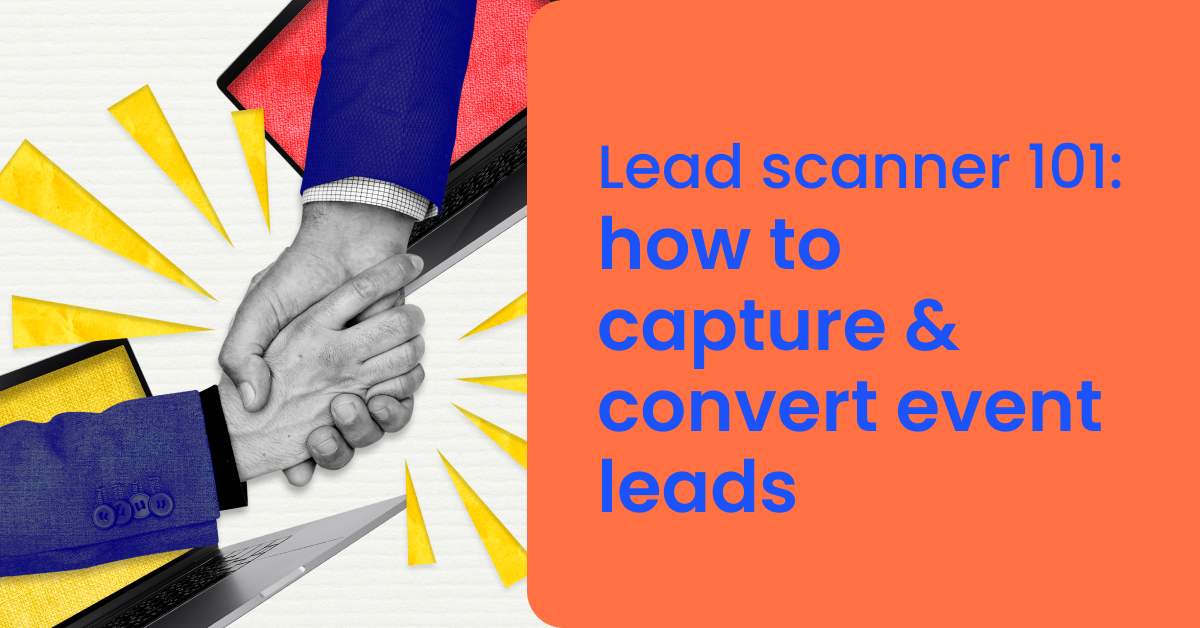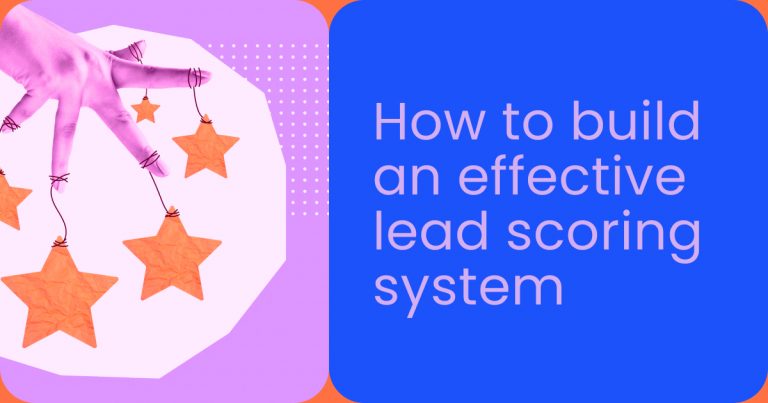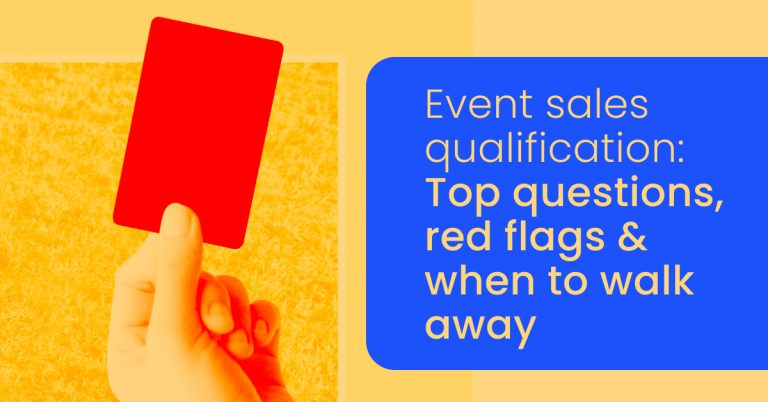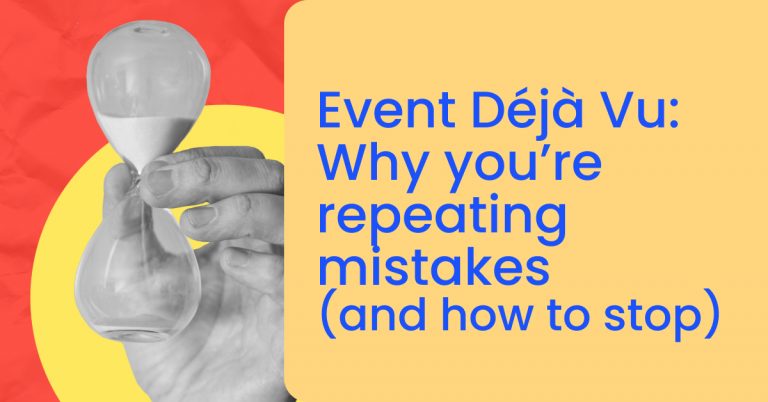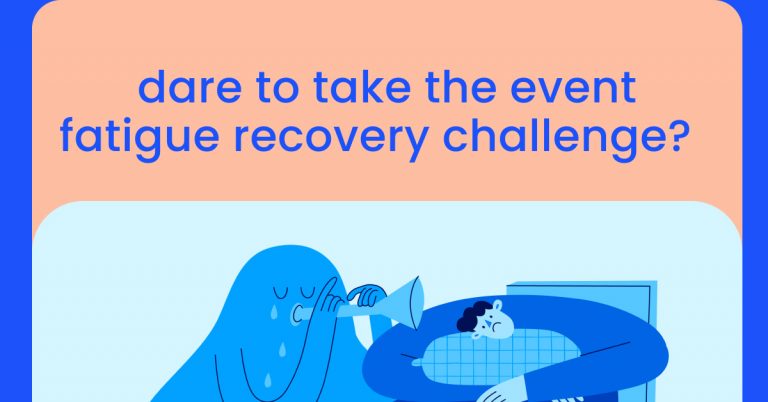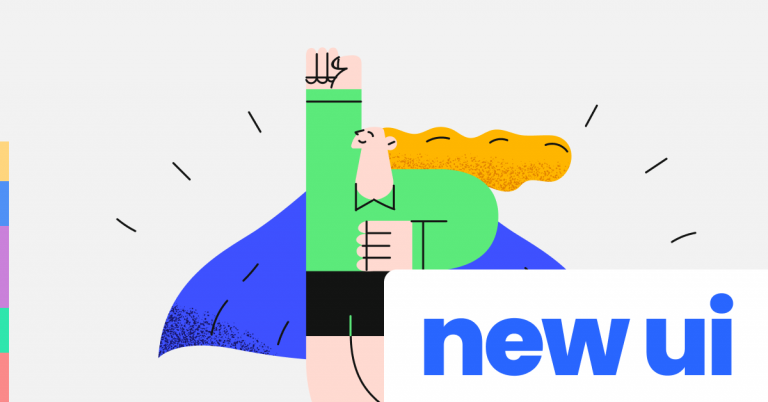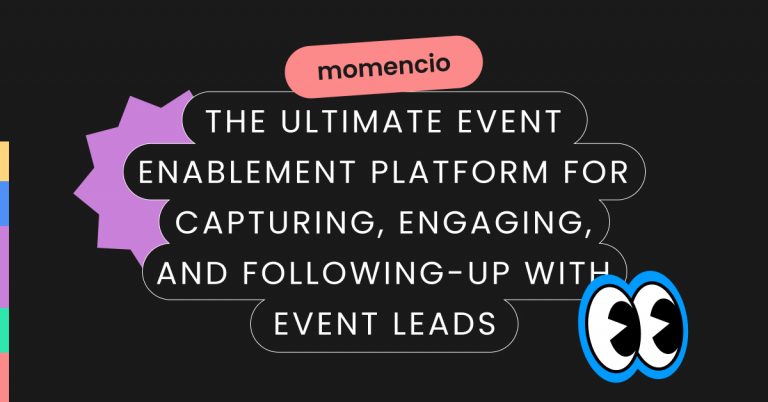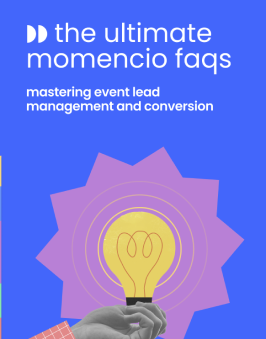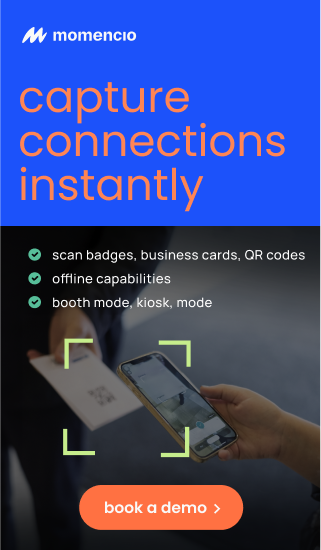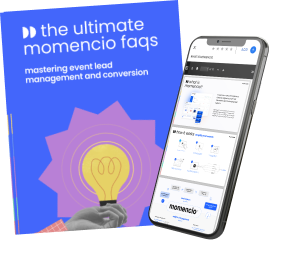If you ask most event professionals what success looks like on the trade show floor, they’ll point to the scanner. More scans, more leads, more opportunity—right?
Except that’s not how it actually plays out.
Lead scanners have become the default tool for collecting contacts at events. Scan a badge, get a name, maybe a title, and move on. Multiply that by a few hundred interactions over a couple of days, and you’ve got what looks like pipeline momentum.
But the truth is, we’re not collecting leads. We’re capturing fragments. Fragments without context. Without memory. Without meaning.
And then we wonder why the follow-up falls flat.
Here’s the thing: the scanner isn’t broken. The process is. We’ve built our event strategy around volume instead of value. We’ve trained teams to chase quantity instead of conversation. And we’ve relied on tools that are excellent at capturing data—but terrible at capturing intent.
What if we flipped it? What if the scanner wasn’t just a tool for collection—but a signal? A moment. A micro-interaction with potential to go deeper. A way to begin—not end—a conversation.
This article isn’t about the technical specs of lead scanners. It’s not a checklist of features or a comparison of apps. It’s about the opportunity we’ve been overlooking: using lead scanners to create real momentum, post-event. Not by scanning more, but by scanning smarter.
If you’re tired of shallow data and cold leads, if you’re ready to rethink what it means to connect with someone at an event, this is for you.
The illusion of data
It’s easy to believe that having more data means having more insight. After all, your scanner captured their name, title, company, maybe even their email and phone number. On paper, it looks like a lead. In reality, it’s just a record.
The problem? We’ve mistaken information for intention.
Just because someone let you scan their badge doesn’t mean they want to hear from you. They may have stopped for a tote bag, or to be polite, or because the booth next to yours had a line. And once that scan happens, we assume we’ve “captured” a lead—when all we’ve really done is document an interaction.
That’s not insight. It’s inventory.
The best salespeople don’t chase contacts—they listen for clues. Clues about timing. About pain points. About urgency. And most scanners, as they’re used today, aren’t built for that. They’re built for volume. One scan per interaction. Move fast. Smile. On to the next.
So, teams return from events with hundreds of names, and no idea who’s actually worth following up with. The result? Generic emails. Missed timing. Leads gone cold before they were ever warm.
This isn’t just inefficient. It’s expensive. You paid for the booth, the travel, the time. You staffed the event with your best reps. And yet the single biggest gap—the space between meeting someone and knowing what to say next—remains unaddressed.
It’s not that scanners don’t work. It’s that we’re not asking them to do the work that matters.
Until we stop confusing scans with signals, we’ll keep filling CRMs with noise—and wondering why conversion rates stay flat.
From contact to context
A lead scanner, on its own, does exactly what it promises—it scans. It collects the basic profile information stored in a badge or QR code, and it stores it. But that alone isn’t the breakthrough. It’s not the real opportunity. The opportunity lies in what happens during that interaction. And more often than not, we miss it.
A scan is not a relationship
We’ve come to think of badge scans as wins. A person walks into our booth, we capture their badge, and we move on—faster, faster, faster. And yet when the dust settles, when the emails go out, and the pipeline reviews begin, the question returns: why didn’t more of these leads convert?
The answer is painfully simple. We collected information, not intention. The scan might give us a name and a title, but it doesn’t tell us why they stopped. What they’re struggling with. What they actually need. And without that context, every follow-up becomes a guess.
The lost moment at the booth
Most reps are working fast. They’ve been trained to optimize for volume—get as many scans as possible, don’t let anyone walk away untagged. The scanner becomes a finish line, not a starting point. And in that rush, something valuable is lost.
Imagine if the first question wasn’t, “Can I scan your badge?” but instead, “What brought you over?” or “Are you looking for something specific today?” These are simple questions, but they open doors. They turn a surface-level interaction into a genuine exchange. And that moment—when someone feels seen and heard—is the real opportunity.
Tools should support real conversation
Some lead capture platforms today are beginning to recognize this. They’ve stopped treating the scanner as a data collector and started building for depth. When your scanner lets you take notes in real time, score a lead based on the conversation, or instantly flag them for specific follow-up tracks, you’re no longer just storing data—you’re telling a story.
Even better: imagine if your scanner could trigger a tailored follow-up email just minutes after the interaction. Not a generic “thanks for stopping by,” but a message that reflects what they actually cared about. A link to a personalized content hub. A short video addressing their specific interest. That’s the kind of relevance that sticks. That’s the kind of functionality some teams are quietly building into their toolkit—platforms that combine real-time engagement, qualification, and automated follow-up in one motion. Tools like momencio are engineered for this, though they don’t shout about it. They simply let the experience speak.
Train for curiosity, not clicks
The technology only gets you so far. The real leverage comes from training your reps to shift their approach. Not to collect as many scans as possible, but to have as many real conversations as possible. One good note. One telling insight. One qualified reason to follow up.
That kind of lead is warmer. That kind of lead remembers you. And when they hear from you post-event, the message isn’t noise—it’s continuity.
Because in the end, the goal isn’t to come home with the biggest list. It’s to come home with the clearest next steps.
Why chasing lead volume is quietly killing your event ROI
Quantity creates false confidence
At the end of a busy trade show, when the scanners are put away and the team gathers for the debrief, someone will say it: “We crushed it. Over 900 leads.” Heads nod. The number feels good. It feels productive. But it’s rarely predictive of actual outcomes.
Volume is easy to measure. It’s tangible. And in the absence of deeper signals, it becomes the default metric. But here’s the hard truth: a high lead count without qualification is just noise. If even a third of those scans turn out to be unfit, unready, or uninterested, your pipeline is flooded with false positives—and your sales team ends up wasting time chasing ghosts.
It’s not just inefficient. It’s demoralizing. Reps begin to distrust event leads entirely. Marketing feels the pressure to justify spend. And leadership starts questioning the value of events as a channel.
Chasing the wrong metric leads to the wrong behavior
When lead count becomes the goal, it drives the wrong actions on the floor. Booth staff become badge collectors, not brand ambassadors. Conversations are cut short. The scanner becomes a substitute for engagement.
This obsession with numbers pushes teams into reactive mode. The focus shifts to scanning anyone who walks by, regardless of fit. Qualification goes out the window. And the downstream cost? It hits every part of the funnel.
Follow-ups are rushed and irrelevant. Sales cycles slow down. Conversion rates tank. And worst of all, genuinely promising leads get buried under a mountain of generic names.
You don’t need more leads—you need better ones
The most effective event teams don’t aim to scan every badge in the building. They aim to identify the right conversations and capture the right signals. They know that five well-qualified, well-documented leads are worth more than fifty anonymous contacts with no context.
This is where your scanner, if used right, becomes a filter—not a funnel. It helps reps slow down just enough to assess fit, log intent, and capture small but critical clues about each lead. Did they ask about pricing? Did they seem frustrated with their current vendor? Were they curious about a specific feature?
Those moments matter. That information—captured in the moment—is what separates high-value follow-up from a mass email blast.
Rethink your post-event benchmarks
Instead of asking, “How many leads did we get?”, start asking better questions:
- How many leads were qualified?
- How many had a next step already discussed?
- How many received a personalized follow-up within 48 hours?
- How many were flagged by sales as high-priority?
This shift isn’t just semantic. It’s strategic. It realigns your event goals with your business goals. And it forces your team to treat lead capture as a moment of discovery—not just a handoff to marketing automation.
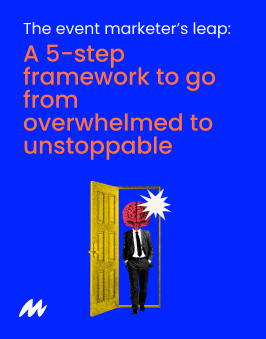
Less waste, more movement
The path to better ROI doesn’t come from increasing lead count. It comes from reducing friction between the booth and the next conversation.
Tools that support this shift aren’t flashy. They’re functional. They let you enrich the lead while you’re still at the event. Trigger timely, relevant content. Push the right leads into your CRM with the right tags, notes, and scores—automatically.
And when the event wraps, you don’t just have a list. You have a roadmap.
How to build a post-event follow-up strategy that doesn’t sound like a mail merge
The inbox is your second impression
You don’t get unlimited chances to follow up. Most leads forget who you are within 72 hours—sometimes less. And if your first post-event email looks, feels, and reads like it was written by a bot, that’s all they’ll remember.
“Hi [First Name], thanks for stopping by our booth at [Event Name].”
Delete.
The inbox is crowded. Everyone is following up at the same time. Everyone is pushing a deck, a demo link, a CTA. But very few are continuing the actual conversation that happened at the booth. And that’s where the opportunity lives.
Replay the moment—not the pitch
Effective follow-up starts with recall. If you can remind the lead of who they talked to, what they asked about, or what they shared, you immediately differentiate yourself. It doesn’t have to be poetic. It just has to be real.
“I enjoyed our quick chat about your CRM migration—hope the Monday IT call wasn’t too painful.”
That’s not marketing. That’s memory.
It creates a thread. A connection point that tells the lead: you weren’t just another scan. we saw you.
To make this work at scale, your team needs to be equipped to capture more than just contact info at the booth. This is where smart scanners make a quiet difference—enabling reps to log a key phrase, a concern, a note. And when that data connects directly to your CRM or email platform, you can use it to personalize the message—not just the salutation.
Stop talking about yourself
Most follow-ups start with a pitch. But your lead didn’t come to the booth to learn about your company. They came looking for solutions to their problems.
So don’t open with features. Open with relevance.
If someone mentioned they’re struggling to get clean data from events, lead with an idea that helps. A tactic. A question. A link to something that speaks directly to that pain.
The best follow-up emails don’t sell. They serve.
Time matters more than tone
If your email takes five days to go out, it doesn’t matter how good it is. The window has closed.
Speed signals attention. It tells the lead that their time was valued, that the interaction mattered. And this is where automation, when used well, can shine—not as a replacement for human tone, but as a tool to help humans move faster.
Some platforms let you pre-load follow-up sequences based on lead tags. A technical lead gets one message. A budget owner gets another. Content is pulled in dynamically based on what they asked about. All triggered the moment the scanner logs the interaction.
It’s not flashy. It’s simply responsible.
Follow-up is not the end of the event
Too many teams treat follow-up as the final step: send the email, check the box, move on.
But the best event marketers know that follow-up is just the beginning. It’s where the real work begins—the nurturing, the segmentation, the handoff to sales. It’s where the event stops being a line item and starts being a revenue driver.
And it only works if the follow-up feels like a real continuation, not a canned sequence.
The goal isn’t just to be remembered. It’s to be relevant—again.
How to measure lead scanner success without using lead count as your north star
The comfort of the wrong metric
Lead count is comforting. It’s immediate, objective, and easy to track. You scan a badge, the number goes up, and it feels like momentum. By the end of the event, you’ve got hundreds—maybe thousands—of contacts. It looks like progress.
But looks can be deceiving.
If you measure success by volume, you create pressure to maximize speed, not quality. You reward reps for scanning, not for engaging. And you walk away from the event with a report that tells you everything—except what really matters.
What you measure shapes how your team behaves
Let’s flip the lens.
Imagine if your event team was measured not by how many leads they scanned, but by how many qualified leads were tagged and scored in real time. Imagine if you tracked how many conversations resulted in a clear next step—like a demo request, a follow-up call, or a resource sent within 24 hours.
These are the moments that move pipeline forward. These are the metrics that signal real interest—not just proximity.
When you measure for clarity instead of collection, everything changes. Reps slow down. They ask better questions. They listen. And your scanner becomes something more than a digital clipboard. It becomes a decision tool.
Trade reports for real signals
Here are a few benchmarks that matter more than raw lead count:
- how many leads were qualified as high potential during the event?
- how many had buying intent indicators captured in notes?
- how many were followed up with within 48 hours?
- how many visited their personalized content hub after the event?
- how many replied to your follow-up email with interest?
These aren’t complex metrics. But they’re meaningful. They reflect action, engagement, memory. They tell you if your event created traction—or just traffic.
Connect data to decisions
If your scanner feeds into your CRM or sales enablement platform, you have the chance to build real-time dashboards that reflect these deeper metrics. Not just “lead source: trade show,” but lead score: qualified, engaged, next action defined.
Platforms like momencio are built for this kind of feedback loop—not by focusing on features, but by quietly enabling your team to do what matters most: collect smarter data, act faster, and make follow-up count.
The best part? When you measure the right things, you start designing the event differently. You build for impact, not impressions.
Redefine ROI before someone else does
Sooner or later, leadership will ask the ROI question. They’ll want to know what the event delivered. If your only answer is “we scanned 1,200 people,” you’re vulnerable.
But if you can say, “we captured 127 leads with clear buying signals, 39 of whom are already in sales conversations,” the conversation shifts. The event isn’t a gamble—it’s a growth lever.
And your lead scanner isn’t just a gadget—it’s a lens into what matters.
Conclusion
The tools haven’t failed us. We’ve just used them to chase the wrong goals.
Lead scanners were never meant to replace conversations. They were built to support them. But somewhere along the way, we let the technology take the lead. We turned moments of connection into transactions. We turned potential into noise.
Now we have a choice.
We can keep chasing volume—more scans, more names, more shallow data. Or we can slow down just enough to ask better questions, capture real signals, and build trust that lasts beyond the booth.
This shift doesn’t require a bigger budget. It requires better intention.
It means training your team to listen. Designing your follow-up to feel human. Measuring success by what actually moves the needle—not what fills the spreadsheet.
Because the goal was never just to collect leads. The goal was to create movement. And the best event marketers—the ones who consistently drive pipeline, revenue, and relationships—know that it starts long before the follow-up email.
It starts with the scan.
But only if you’re willing to see what’s really in front of you.
If you’ve made it this far, you’re probably not looking for just another scanner. You’re looking for a smarter way to work your booth. To connect with the right people. To turn every event into real movement for your pipeline.
That’s the kind of thinking momencio was built for.
It’s not loud. It’s not complex. It’s just thoughtfully designed to help teams capture more than data—context, intent, and momentum. From scan to follow-up, from booth to close.
If that sounds like the kind of shift you’re ready to make, take a look. See how it works. Ask the right questions.
Because the next event is coming. And this time, it should count.
FAQs
- How is a lead scanner different from traditional badge scanning?
- A traditional badge scanner captures only basic information—name, title, and maybe a company. A lead scanner, when used intentionally, goes further. It helps you log context, ask qualifying questions, and trigger timely follow-ups. The difference isn’t just in the hardware. It’s in how you use the moment.
- What should I train my booth staff to do differently?
- Train for curiosity, not speed. Instead of scanning everyone who walks by, teach your team to start conversations. Ask why someone stopped. Listen. Make a note. The scanner should support the interaction—not replace it.
- How soon should I follow up after an event?
- Within 48 hours. That’s the window when memory is fresh and interest is high. Anything beyond that feels like catching up. Smart scanners and lead management platforms can help automate this without making it feel robotic.
- Isn’t collecting as many leads as possible still a good thing?
- Only if you can qualify them effectively. Otherwise, you end up with a bloated CRM, an overwhelmed sales team, and a lot of wasted time. A smaller list of high-intent leads will always outperform a large list of unknowns.
- What’s the biggest mistake teams make with lead scanners?
- Treating the scan as the end of the interaction. The scanner should be a bridge to the next step—not the final step. When it’s used as a conversation tool, not just a data grabber, the entire event strategy becomes more effective.
Interesting facts from research
- 81% of trade show attendees have buying authority, but most exhibitors fail to follow up in a relevant or timely way.
- Engaging leads within 60 seconds of inquiry can boost conversion rates by almost 400%.
- The average sales rep wastes over 20 hours per event qualifying unfit leads collected through bulk scanning.
- Teams that capture lead context during the event report a 30% higher likelihood of closed-won opportunities in the following quarter.
